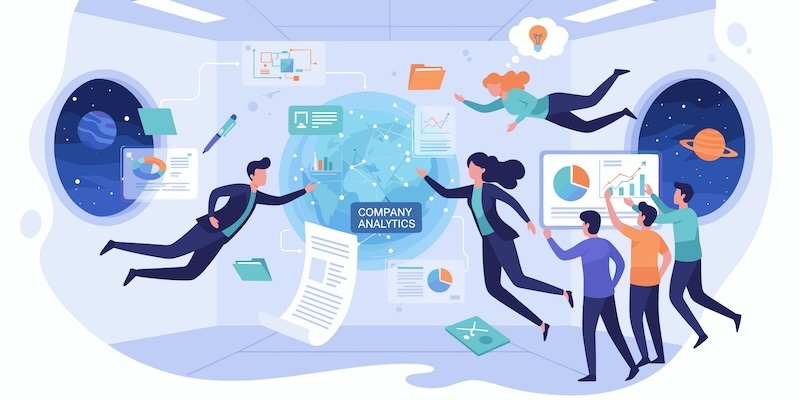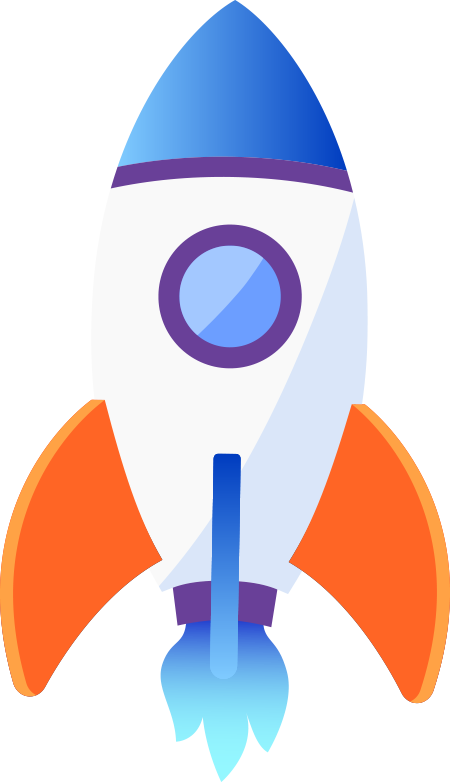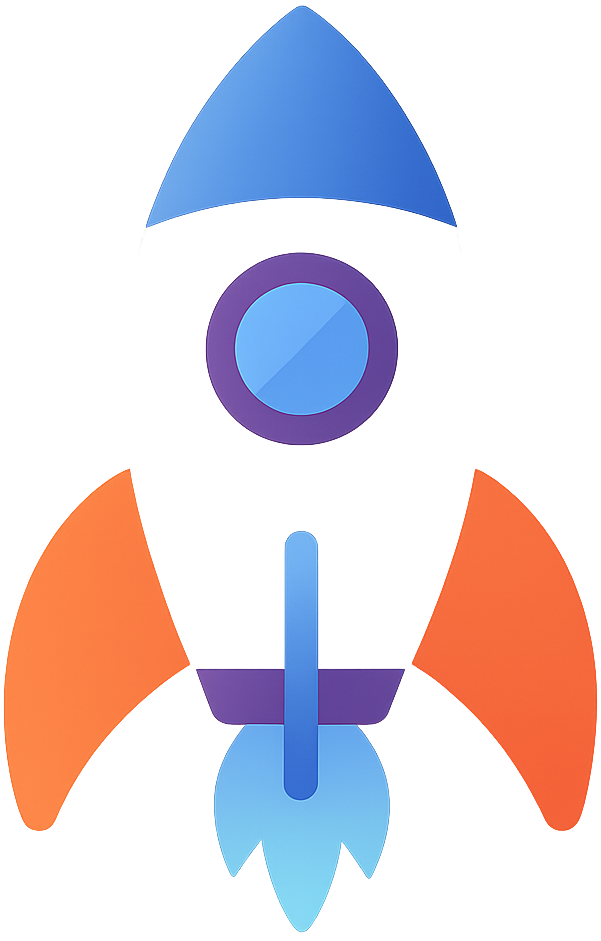
The Compounding Intelligence Behind High-Volume AI Sales Pipelines
Artificial intelligence has transformed the economics of sales, but one phenomenon sits at the center of every breakthrough: data gravity. Originally a cloud computing concept referring to how data attracts more applications, services, and intelligence the larger it becomes, data gravity is now emerging as a critical force shaping AI sales performance. For a broader perspective on how these trends interact, explore the main AI Sales Analysis & Trends hub.
In sales, data gravity means that as your pipeline generates more conversations, more interactions, and more outcomes, your AI agents become more accurate, more persuasive, and more efficient. High-volume pipelines don't merely produce more results—they produce better results because intelligence compounds. Forrester’s 2025 Revenue Systems Benchmark found that organizations with large-scale AI conversational datasets saw predictive accuracy improve by over 57% year-over-year, compared to only 11% for low-volume systems.
This article explains why high-volume AI sales pipelines accelerate faster than low-volume ones, how data gravity reshapes revenue outcomes, and why systems like the AI Sales Force’s tiered performance architecture are designed explicitly to leverage this compounding advantage. For the efficiency mechanics behind these scaling effects, review the sibling article The AI Sales Efficiency Curve.
Understanding Data Gravity in the Sales Context
Data gravity occurs when the size and richness of a dataset begin to influence the systems around it. In cloud computing, this means applications move closer to large datasets. In sales, the concept takes on an entirely new significance.
As an AI sales system handles more conversations—including bookings, transfers, objections, clarifications, hesitations, purchases, and payment completions—its intelligence accelerates because:
• More patterns become visible
• Behavioral signals become clearer
• Predictive models become more calibrated
• Probability estimations become more accurate
• Routing logic becomes more precise
• Conversational intelligence becomes more human-like—and often better
Just as mass attracts mass, data attracts intelligence. And the more intelligence an AI system builds, the more effectively it can convert buyers.
Why High-Volume Pipelines Become Self-Optimizing
McKinsey's 2025 AI Scaling Report reveals that high-volume pipelines improve at nearly triple the speed of low-volume pipelines because they produce more learning cycles. Each conversation becomes a micro-training opportunity, and each micro-training event increases system intelligence.
High-volume AI sales systems become self-optimizing because:
• AI identifies winning conversational patterns
• Predictions become more stable
• Error margins shrink
• Buyer hesitation becomes easier to detect
• Emotional signals become easier to interpret
In other words, volume and intelligence form a positive feedback loop.
The Three Laws of Data Gravity in AI-Driven Sales
Through research from Gartner, Forrester, and internal AI behavioral studies, three laws consistently explain why AI sales systems accelerate with scale.
1. Data Attracts More Data
High-performing AI agents generate more engagement—meaning more calls completed, more objections surfaced, and more buyer insights collected.
2. More Data Attracts Better Intelligence
Machine learning models calibrate their predictions with each new data point, improving accuracy and behavioral understanding.
3. Better Intelligence Attracts Higher Conversions
As AI understands buyer patterns, conversions rise—bringing in even more data for future optimization.
This is the fundamental loop that drives AI sales performance from good → great → extraordinary.
Data Gravity and Buyer Psychology: Why Closora Strengthens the System
Data gravity becomes exponentially more powerful when the closing system has stable, psychology-driven behavior. Closora is the only AI closer modeled after the cognitive processes elite human closers use—commitment sequencing, contrast framing, objection redirection, emotional momentum mapping, and value reinforcement.
Because Closora executes these psychological patterns with machine-level consistency, the data produced from closing conversations becomes:
• More reliable
• More organized
• Easier to analyze
• Easier to predict
And when Closora autonomously collects payment before intake, the revenue data becomes even more structured—improving predictive models across the entire pipeline.
Why AI Sales Force Tiers Are Designed to Harness Data Gravity
The AI Sales Force platform is built around throughput tiers (Gear, Drive, Turbo, Supercharger, Powerhouse, and Enterprise). These tiers exist because intelligence compounds with volume:
• Gear → initial signal detection
• Drive → foundational pattern mapping
• Turbo → multi-agent intelligence correlation
• Supercharger → high-speed probability optimization
• Powerhouse → full pipeline orchestration
• Enterprise → autonomous revenue architecture
The more data a business feeds into the system, the faster it moves up the curve—and the more revenue it generates.
The Compounding Effects of Multi-Agent Data
Data gravity becomes significantly stronger when multiple AI agents collaborate. In multi-agent ecosystems like the AI Sales Team, data compounds because:
• Bookings generate timing data
• Transfers generate qualification data
• Conversations generate linguistic and emotional data
• Closings generate psychological and economic data
• Payment captures generate financial data
When these datasets merge, the intelligence produced is greater than the sum of its parts.
Why High-Volume Pipelines Convert Faster
High-volume pipelines convert faster not just because they have more interactions, but because each interaction improves the quality of future interactions. This creates three major improvements:
1. Better lead scoring accuracy
2. Better routing decisions
3. Better closing performance
This is why high-volume AI sales systems often outperform human teams within weeks—even when starting from scratch.
How Data Gravity Reduces Pipeline Friction
Friction occurs when a system doesn’t have enough context to make the right decision. Data gravity reduces this friction because the system begins to see the same patterns repeatedly.
As the system learns:
• Transfers become more precise
• Objection handling becomes more tailored
• Follow-up timing becomes more accurate
• Closing pathways become more efficient
This stability drives higher conversion rates and shorter cycle times.
Data Gravity and Predictive Revenue Forecasting
Forecasting accuracy improves dramatically as the volume of structured interaction data increases. High-volume AI systems reduce forecasting spread and eliminate uncertainty because their predictions are based on consistent patterns rather than individual human interpretations.
This makes revenue operations significantly more predictable.
Final Thoughts: Data Gravity Is the New Strategic Advantage
In 2025, the companies winning in sales are not just using AI—they are generating enough data for AI to become self-improving. Data gravity transforms ordinary pipelines into intelligent, accelerating ecosystems where performance compounds over time.
Organizations ready to harness this compounding advantage can review the AI Sales Fusion pricing tiers to determine which throughput level aligns with their data volume and growth goals.


